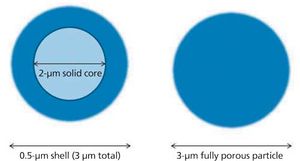
Microflow LC–MS-MS has seen a surge of attention, development, and popularity among research scientists and bioanalysts over the last few years. The potential of this technology to provide better sensitivity, less solvent waste, near-zero dead volume, and high through-put are a big part of this renewed interest. However, microflow LC techniques are hardly a new idea. More than 40 years ago, in 1974, a group at Nagoya University in Japan first developed a microcolumn liquid chromatography system, elements of which can be found in today’s commercial products. With the advances in technology over the last several years, development and implementation of this technique have been kicked into high gear. In this article, we discuss the history of microflow LC–MS-MS, the current state of the art, and where the future might lead for this rapidly growing technology.






